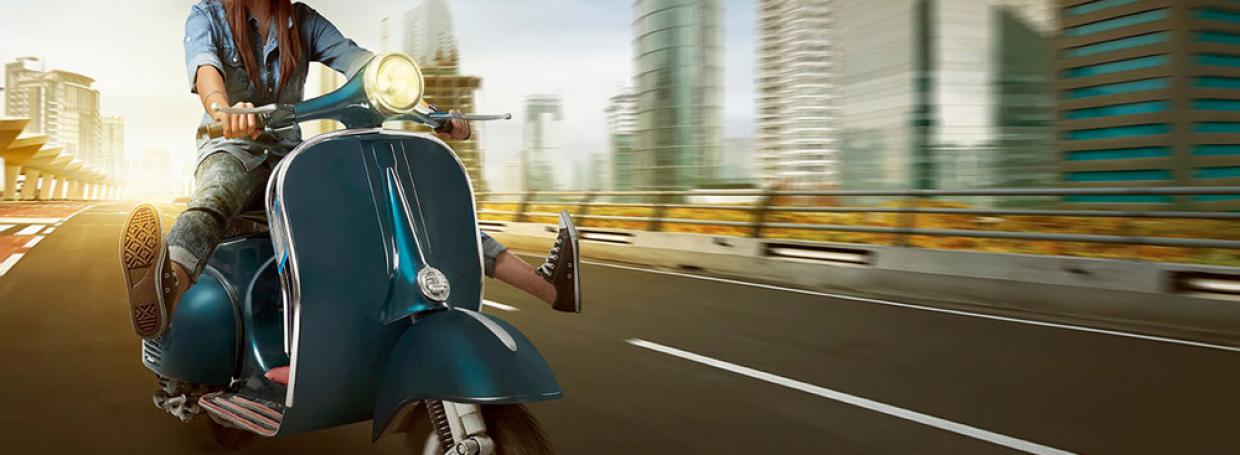What can we help you with?
Some important tips to protect your motorcycle NCD - DirectAsia

Picture this. You’ve owned your motorcycle for three years. In that span of time, you’ve never gotten into an accident. You’ve been a responsible driver, and you’ve taken extra care to regularly maintain your motorcycle.
Until one day, a newbie driver bumps into your motorcycle while it’s parked along a road. Or maybe you find yourself in a minor accident. So you file an insurance claim to cover the cost of repairs.
There goes your no-claims discount (NCD).
For the uninitiated, a no-claims discount is a discount you get for not making any insurance claims for consecutive years. Here’s an example of discounted rates to show how NCDs work:
 Some motorcycle owners have built an incident-free record over one, three, or even five years. But a minor accident can negate all of that in the eyes of some insurance providers—even if you weren’t at fault. Ouch.
That’s where NCD protection comes in. NCD protection is like taking out insurance to protect your discount.
Companies that provide NCD protection understand that a single incident—whether or not it’s the motorcycle owner’s fault—should not undo your responsible driving record.
They understand that you should still be entitled to the discount you worked hard to earn if you’ve only encountered a single mishap, especially one you didn’t cause.
Some motorcycle owners have built an incident-free record over one, three, or even five years. But a minor accident can negate all of that in the eyes of some insurance providers—even if you weren’t at fault. Ouch.
That’s where NCD protection comes in. NCD protection is like taking out insurance to protect your discount.
Companies that provide NCD protection understand that a single incident—whether or not it’s the motorcycle owner’s fault—should not undo your responsible driving record.
They understand that you should still be entitled to the discount you worked hard to earn if you’ve only encountered a single mishap, especially one you didn’t cause.


 Some motorcycle owners have built an incident-free record over one, three, or even five years. But a minor accident can negate all of that in the eyes of some insurance providers—even if you weren’t at fault. Ouch.
That’s where NCD protection comes in. NCD protection is like taking out insurance to protect your discount.
Companies that provide NCD protection understand that a single incident—whether or not it’s the motorcycle owner’s fault—should not undo your responsible driving record.
They understand that you should still be entitled to the discount you worked hard to earn if you’ve only encountered a single mishap, especially one you didn’t cause.
Some motorcycle owners have built an incident-free record over one, three, or even five years. But a minor accident can negate all of that in the eyes of some insurance providers—even if you weren’t at fault. Ouch.
That’s where NCD protection comes in. NCD protection is like taking out insurance to protect your discount.
Companies that provide NCD protection understand that a single incident—whether or not it’s the motorcycle owner’s fault—should not undo your responsible driving record.
They understand that you should still be entitled to the discount you worked hard to earn if you’ve only encountered a single mishap, especially one you didn’t cause.
Introducing NCD Protector Plus
Depending on the insurance provider, NCD protection may be given only to motorcycle owners who are proven to have no fault in an incident. Others, however, provide protection despite one at-fault claim. This type of protection allows motorcyclists who make a claim to maintain their NCD level. In the case of our clients, motorcyclists may even advance their NCD to the next level the following year despite having made an at-fault claim by adding on NCD Protector Plus. Here’s an example of what happens to your protected NCD the following year even when you make a claim:
Things to take note of when protecting your NCD
NCD protection sounds like a perfect solution for insuring your hard-earned discounts, but you’ll need to carefully compare different policies. Consider these factors when taking out NCD protection:- Review the extent of protection your insurance policy covers. Does it include motorcycle accessories and cover incidents of theft, fire, or vandalism?
- Check your policy documents to see whether you’ve opted to protect only yourself or have added a named rider or any rider on your motorcycle. This may affect your NCD protection claim if someone else was driving the motorcycle at the time of the incident.
- Check with your NCD protection provider about the maximum amount of time that may elapse between the incident and the day you report it and make a claim.
- See if your insurance provider will protect your NCD even in instances when you’re at fault.
Tips for protecting your motorcycle NCD
In Singapore, NCD protection for motorcycle owners is still hard to come by. The industry’s conservative approach is understandable—the total number of accidents involving motorcyclists rose by 1.9 percent in the first six months of 2018, according to the Singapore Police Force. The police also saw an increase in the number of fatal accidents involving motorcyclists, as well as the in the number of injured motorcyclists and pillion riders. On the flip side, for every irresponsible driver, there are dozens who endeavour to make sure the streets are safe for everyone, including pedestrians and riders. And at the end of the day, that’s still the best way to prevent the loss of your NCD. Below are tips for avoiding motorcycle accidents and protecting your NCD as a result.


